- Home
- Robert Silverberg
This Way to the End Times: Classic Tales of the Apocalypse
This Way to the End Times: Classic Tales of the Apocalypse Read online
HIGH PRAISE for
This Way to The End Times
A PESSIMIST’S DREAM comes true in 21 exceptional tales of Earth’s devastation and humans’ inventive, and often ironically self-destructive, ways of surviving. Themes of religion, flooding, Adam and Eve, Atlantis, aliens, misogyny, and government oppression permeate the collection, which contains works written between 1906 and 2016 by science fiction legends as well as new authors. . . . These stunning stories contemplate survival while questioning whether life is worth saving, and many have such rich ideas and settings that they could easily spark full-length novels.
—PUBLISHERS WEEKLY, Starred Review
APOCALYPTIC FICTION IS still a very hot trend, but as award-winning sf writer and editor of this collection Silverberg notes in the introduction, it’s hardly a new one: “Humankind seems to take a certain grisly delight in stories about the end of the world, and the market in apocalyptic prophecy has been bullish for thousands, or, more likely, millions of years. . . .” With its range of contributors, this is a much needed volume that will both satisfy the high demand for apocalyptic tales and remind readers of the actual breadth and depth of this literature of the end of the world.
—ALA BOOKLIST, Starred Review
THE STORIES ARE uniformly good and frequently excellent. . . . The variety of ways in which these stories choose to end the world offers a great deal—nightmarish, funny, lonely, or hopeful—for the imagination. Wonderfully written, surprisingly varied apocalyptic tales.
—KIRKUS REVIEWS
SCIENCE FICTION LEGEND Robert Silverberg has picked the best of the very best stories for this volume. Absolute gold, from first word to last gasp!
—JONATHAN MABERRY, New York Times bestselling author of Mars One and Kill Switch
This Way to
The End Times
CLASSIC TALES
OF THE APOCALYPSE
EDITED BY
Robert Silverberg
THREE ROOMS PRESS
New York, NY
THIS WAY TO THE END TIMES: CLASSIC TALES OF THE APOCALYPSE
EDITED BY Robert Silverberg
© 2016 by Three Rooms Press
ACKNOWLEDGMENTS: “Introduction” by Robert Silverberg, Copyright © 2016 by Agberg, Ltd.; “The Eternal Adam” by Jules Verne, first published in 1910 in the collection Hier et Demain. English translation by Willis T. Bradley first published in 1957 in Saturn Science Fiction; “The Last Generation,” by James Elroy Flecker, first published in 1908 by the New Age Press; “Finis,” by Frank Lillie Pollock, first published in 1906 in Argosy; “The Coming of the Ice” by G. Peyton Wertenbaker, first published in 1926 in Amazing Stories; “N Day,” by Philip Latham, Copyright © 1946 by the estate of R. S. Richardson. Reprinted by permission of Barry Malzberg, agent for the estate of R. S. Richardson; “Guyal of Sfere,” by Jack Vance, Copyright © 1950, 1978 by Jack Vance. Reprinted by permission of John Vance, executor for the agent of Jack Vance; “A Pail of Air,” by Fritz Leiber, Copyright © 1951, 1979 by Fritz Leiber. Reprinted by permission of Richard Curtis Associates, agents for the estate of Fritz Leiber; “Who Can Replace a Man?,” by Brian W. Aldiss, Copyright © 1958, 1986 by Brian W. Aldiss. Reprinted by permission of the author; “Heresies of the Huge God,” by Brian W. Aldiss, Copyright © 1966 by Brian W. Aldiss. Reprinted by permission of the author; “The New Atlantis,” by Ursula K. Le Guin, Copyright © 1975 by Ursula K. Le Guin. Reprinted by permission of the author and the author’s agents, Curtis Brown, Ltd.; “When We Went to See the End of the World,” by Robert Silverberg, Copyright © 1972 by Agberg, Ltd. Reprinted by permission of the author and Agberg, Ltd.; “The Wind and the Rain,” by Robert Silverberg, Copyright © 1973 by Agberg, Ltd. Reprinted by permission of the author and Agberg, Ltd.; “The Screwfly Solution,” by James Tiptree Jr., Copyright © 1977 by Alice B. Sheldon, copyright © 2005 by Jeffrey D. Smith. First published under the name of Raccoona Sheldon. Reprinted by permission of Jeffrey D. Smith and the Virginia Kidd Agency, Inc., agents for the author’s estate; “Daisy, in the Sun,” by Connie Willis, Copyright © 1979 by Connie Willis. Reprinted by permission of the author and the Lotts Agency, agents for the author; “After-Images,” by Malcolm Edwards, Copyright © 1983 by Malcolm Edwards. Reprinted by permission of the author; “The Rain at the End of the World,” by Dale Bailey, Copyright © 1999 by Dale Bailey. Reprinted by permission of the author; “The End of the World as We Know It,” by Dale Bailey, Copyright © 2004 by Dale Bailey. Reprinted by permission of the author; “Final Exam,” by Megan Arkenberg, Copyright © 2012 by Megan Arkenberg. Reprinted by permission of the author; “Three Days After,” by Karen Haber, Copyright © 2014 by Karen Haber. Reprinted by permission of the author; “Prayers to the Sun,” by Alvaro Zinos-Amaro, Copyright © 2016 by Alvaro Zinos-Amaro; Last and First Men, by Olaf Stapledon, Copyright © 1930 by William Olaf Stapledon. Extract printed by permission of the author’s estate.
All rights reserved. This book or parts thereof may not be reproduced in any form without permission in writing, except by a reviewer, who may quote brief passages in a review. For information, please write to Three Rooms Press via email [email protected] or c/o Permission Editor, Three Rooms Press, 561 Hudson Street, #33, New York, NY 10012.
COVER ART: A. V. FLORES; www.avflores.com
BOOK DESIGN: KG Design International; www.katgeorges.com
DISTRIBUTED BY: PGW/Ingram; www.pgw.com
Visit our website at www.threeroomspress.com or write us at [email protected]
ISBN 978-1-941110-47-8 (trade paperback); ISBN 978-1-941110-48-5 (ebook)
Library of Congress Control Number: 2016936893
And God saw that the wickedness of man was great in the earth, and that every imagination of the thoughts of his heart was only evil continually.
And it repented the Lord that he had made man on the earth, and it grieved him at his heart.
And the Lord said, I will destroy man whom I have created from the face of the earth; both man and beast, and the creeping thing, and the fowls of the air; for it repenteth me that I have made them.
— GENESIS 6: 5–7
TABLE OF CONTENTS
INTRODUCTION
by Robert Silverberg
THE ETERNAL ADAM
by Jules Verne
THE LAST GENERATION
by James Elroy Flecker
FINIS
by Frank Lillie Pollock
THE COMING OF THE ICE
by G. Peyton Wertenbaker
N DAY
by Philip Latham
GUYAL OF SFERE
by Jack Vance
A PAIL OF AIR
by Fritz Leiber
WHO CAN REPLACE A MAN?
by Brian W. Aldiss
HERESIES OF THE HUGE GOD
by Brian W. Aldiss
THE NEW ATLANTIS
by Ursula K. Le Guin
WHEN WE WENT TO SEE THE END OF THE WORLD
by Robert Silverberg
THE WIND AND THE RAIN
by Robert Silverberg
THE SCREWFLY SOLUTION
by James Tiptree Jr.
AFTER-IMAGES
by Malcolm Edwards
DAISY, IN THE SUN
by Connie Willis
THREE DAYS AFTER
by Karen Haber
THE RAIN AT THE END OF THE WORLD
by Dale Bailey
THE END OF THE WORLD AS WE KNOW IT
by Dale Bailey
FINAL EXAM
by Megan Arkenberg
PRAYERS TO THE SUN BY A DYING PERSON
by Alvaro Zinos-Amaro
<
br /> LAST AND FIRST MEN
by Olaf Stapledon
INTRODUCTION
BY ROBERT SILVERBERG
THIS BOOK’S EPIGRAPH COMES FROM the one of the earliest pages of the Bible. We are told of the creation of the world in the first chapter of Genesis and by chapter six, after God has brought forth Adam and Eve and their progeny has multiplied greatly, the Lord has tired of His handiwork and, as quoted at the beginning of this book, resolves to cleanse the planet of it by sending a terrible deluge upon our ancestors.
Fortunately for us, He is not bent on total destruction: Noah is instructed to build an ark and bring his family aboard, and it is duly stocked with a host of creatures, “clean beasts and . . . beasts that are not clean . . . fowls . . . every thing that creepeth upon the earth.” Two by two they go aboard, dogs and cats and sheep and, I suppose, elephants and wombats and aardvarks as well, so that when the waters of the flood recede the world can begin anew, and here we are in what we Westerners call the twenty-first century, looking forward to the next terminal convulsion of our Maker’s mood.
The second volume of the Good Book lets us know that another apocalypse will eventually be heading our way. In the Second Epistle of Peter, chapter three, verse ten, we are advised that “the day of the Lord will come as a thief in the night; in the which, the heavens shall pass away with a great noise, and the elements shall melt with fervent heat, the earth also and the works that are therein shall be burned up.” And a few lines later, St. Peter tells us that inasmuch as all things thus shall be destroyed, it behooves us “to be in all holy conversation and godliness, looking for and hasting unto the coming of the day of God, wherein the heavens being on fire shall be dissolved, and the elements shall melt with fervent heat.” We should, we are told, “look for new heavens and a new earth, wherein dwelleth righteousness.” Once again we are given hope of ultimate redemption, although apparently it will be provided us in some other universe.
The apocalyptic warnings of the Bible, which culminate most spectacularly in the technicolor wonders of the Revelation of St. John the Divine (“And there appeared another wonder in heaven; and behold a great red dragon, having seven heads and ten horns, and seven crowns upon his heads. . . .”), were already ancient when the Scriptures, both New and Old, were set down a couple of thousand years ago. For whatever reason, humankind seems to take a certain grisly delight in stories about the end of the world, and the market in apocalyptic prophecy has been a bullish one for thousands or, more likely, millions of years. Even the most primitive of protohuman creatures, back there in the Africa of Ardipithecus and her descendants, must have come eventually to the realization that each of us must die; and from there to the concept that the world itself must perish in the fullness of time was probably not an enormous intellectual leap for those hairy bipedal creatures of long ago. Around their prehistoric campfires our remote hominid ancestors surely would have told each other tales of how the great fire in the sky would become even greater one day and consume the universe, or, once our less distant forebears had moved along out of the African plains to chillier Europe, how the glaciers of the north would someday move implacably down to crush them all. Even an eclipse of the sun was likely to stir brief apocalyptic excitement.
I suppose there is a kind of strange comfort in such thoughts: “If I must die, how good that all of you must die also!” But the chief value of apocalyptic visions, I think, lies elsewhere than in that sort of we-will-all-go-together-when-we-go spitefulness, for as we examine the great apocalyptic myths we see that not only death but resurrection is usually involved in the story—a bit of eschatological comfort, of philosophical reassurance that existence, though finite and relatively brief for each individual, is not totally pointless. Yes, the tale would run, we have done evil things and the gods are angry and the world is going to perish, in a moment, in the twinkling of an eye, but then will come a reprieve, a second creation, a rebirth of life, a better world than the one that has just been purged.
What sort of end-of-the-world stories our primordial preliterate ancestors told is something we will never know, but the oldest such tale that has come down to us, which is found in the 4,500-year-old Sumerian epic of Gilgamesh, King of Uruk, is an account of a great deluge that drowns the whole Earth, save only one man, Ziusudra by name, who manages to save his family and set things going again. Very probably the deluge story had its origins in memories of some great flood that devastated Sumer and its Mesopotamian neighbors in prehistoric times, but that is only speculation. What is certain is that the theme can be found again in many later versions: the Babylonian story gives the intrepid survivor the name of Utnapishtim, the Hebrews called him Noah, to the ancient Greeks he was Deucalion, and in the Vedic texts of India he is Manu. The details differ, but the essence is always the same: the gods, displeased with the world, resolve to destroy it, but then relent and bring mankind forth for a second try.
Floods are not the only apocalypses that ancient myths offer us. The Norse tales give us a terrible frost, the Fimbulwinter, in which all living things die except a man and a woman who survive by hiding in a tree; they follow the usual redemptionist course and repeople the world, but then comes an even greater cataclysm, Ragnarök, the doom of the gods themselves, in which the stars fall, the earth sinks into the sea, and fire consumes everything—only to be followed by yet another rebirth and an era of peace and plenty. And then there is St. John’s Book of Revelation in the Christian tradition, in which the wrath of God is visited upon the Earth in a host of ways (fire, plague, hail, drought, earthquakes, flood, and much more), leading to the final judgment and the redemption of the righteous. The Aztecs, too, had myths of the destruction of the world by fire—several times over, in fact—and so did the Mayans. It was not very long ago, as I write this, that much popular excitement was being stirred by an alleged Mayan prediction that the next apocalypse was due in 2012. Perhaps there was an error in translation from the Mayan glyphs, though, because we appear to have come through that one intact.
Since apocalyptic visions are nearly universal in the religious literature of the world, and probably always have been, it’s not surprising that they should figure largely in the fantasies of imaginative storytellers. Even before the term “science fiction” had been coined, stories of universal or near-universal extinction brought about not by the anger of the deities but by the innate hazards of existence were being written and achieving wide popularity. Nineteenth-century writers were particularly fond of them. Thus we find such books as Jean-Baptiste Cousin de Grainville’s The Last Man, or Omegarus and Syderia (1805) and Mary Shelley’s The Last Man (1826), which was written under the shadow of a worldwide epidemic of cholera that raged from 1818 to 1822. Edgar Allan Poe sent a comet into the Earth in “The Conversation of Eiros and Charmion” (1839). The French astronomer Camille Flammarion’s astonishing novel of 1893, La Fin du Monde, or Omega in its English translation, brought the world to the edge of doom—but only to the edge—as another giant comet crosses our path. H. G. Wells told a similar story of near-destruction, almost surely inspired by Flammarion’s, in “The Star” (1897). In his classic novel The Time Machine (1895) Wells had already taken his time traveler to the end of life on Earth and beyond. (“All the sounds of man, the bleating of sheep, the cries of birds, the hum of insects, the stir that makes the background of our lives—all that was over.”) Another who must certainly have read Flammarion is his compatriot Jules Verne, who very likely drew on the latter sections of Omega for his novella, “The Eternal Adam” (1905). Here Verne espouses a cyclical view of the world: Earth is destroyed by a calamitous earthquake and flood, but the continent of Atlantis wondrously emerges from the depths to provide a new home for the human race, which after thousands of years of toil rebuilds civilization; and we are given a glimpse, finally, of a venerable scholar of the far future looking back through the archives of humanity, “bloodied by the innumerable hardships suffered by those who had gone before him,” and coming, “sl
owly, reluctantly, to an intimate conviction of the eternal return of all things.”
The eternal return! It is the theme of so much of this apocalyptic literature. That phrase of Verne’s links his story to the core of Flammarion’s own belief that our own little epoch is “an imperceptible wave on the immense ocean of the ages” and that mankind’s destiny is, as we see in Omega’s closing pages, to be born again and again into universe after universe, each to pass on in its turn and be replaced, for time goes on forever and there can be neither end nor beginning.
Rebirth after catastrophe is to be found, also, in M. P. Shiel’s magnificent novel The Purple Cloud (1901), in which we are overwhelmed by a mass of poisonous gas, leaving only one man—Adam is his name, of course—as the ostensible survivor, until he finds his Eve and life begins anew. No such renewal is offered in Frank Lillie Pollock’s terminally apocalyptic short story “Finis” (1906), though, which postulates a gigantic central star in the galaxy whose light has been heading toward us for an immense span of time and now finally arrives, so that “there, in crimson and orange, flamed the last dawn that human eyes would ever see.” James Elroy Flecker (1908) had the entire human race wearying of its existence and committing mass suicide.
There is ever so much more. Few readers turn to apocalyptic tales these days for reassurance that once the sins of mankind have been properly punished, a glorious new age will open; but, even so, the little frisson that a good end-of-the-world story supplies is irresistible to writers, and the bibliography of apocalyptic fantasy is an immense one. Garrett P. Serviss’s The Second Deluge (1912) drowns us within a watery nebula. G. Peyton Wertenbaker’s “The Coming of the Ice” (1926) brings the glaciers back with a thoroughness that makes the Norse Fimbulwinter seem like a light snowstorm. Philip Wylie and Edwin Balmer’s When Worlds Collide (1933) tells us of an awkward astrophysical event with very unpleasant consequences for our planet. Edmond Hamilton’s “In the World’s Dusk” (1936) affords a moody vision of the end of days, millions of years hence, when one lone man survives and “a white salt desert now covered the whole of Earth. A cruel glaring plain that stretched eye-achingly to the horizons . . . .” Robert A. Heinlein’s story “The Year of the Jackpot” (1952) puts the end much closer—1962, in fact—when bad things begin to happen in droves all around the world, floods and typhoons and earthquakes and volcanic eruptions worthy of the Book of Revelation, culminating in a lethal solar catastrophe. J. T. McIntosh’s One in Three Hundred (1954) also has the sun going nova, at novel length. And, of course, the arrival of atomic weapons in 1945 set loose such a proliferation of nuclear-holocaust stories that it would take many pages to list them all.

 The Longest Way Home
The Longest Way Home Hawksbill Station
Hawksbill Station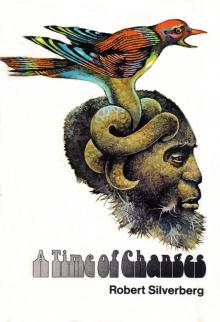 A Time of Changes
A Time of Changes This Way to the End Times: Classic Tales of the Apocalypse
This Way to the End Times: Classic Tales of the Apocalypse Beyond the Gate of Worlds
Beyond the Gate of Worlds Lord Valentine's Castle
Lord Valentine's Castle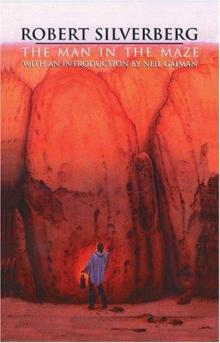 The Man in the Maze
The Man in the Maze Tales of Majipoor
Tales of Majipoor Time of the Great Freeze
Time of the Great Freeze The Collected Stories of Robert Silverberg, Volume 3: Something Wild Is Loose: 1969-72
The Collected Stories of Robert Silverberg, Volume 3: Something Wild Is Loose: 1969-72 Planet of Death
Planet of Death Trips: The Collected Stories of Robert Silverberg, Volume Four
Trips: The Collected Stories of Robert Silverberg, Volume Four In the Beginning: Tales From the Pulp Era
In the Beginning: Tales From the Pulp Era Hot Sky at Midnight
Hot Sky at Midnight Valentine Pontifex
Valentine Pontifex Up the Line
Up the Line Thorns
Thorns Amanda and the Alien
Amanda and the Alien Star of Gypsies
Star of Gypsies Nightwings
Nightwings The Time Hoppers
The Time Hoppers Blood on the Mink
Blood on the Mink Dying Inside
Dying Inside The Last Song of Orpheus
The Last Song of Orpheus The King of Dreams
The King of Dreams The Stochastic Man
The Stochastic Man The Collected Stories of Robert Silverberg, Volume Seven: We Are for the Dark
The Collected Stories of Robert Silverberg, Volume Seven: We Are for the Dark The Millennium Express: The Collected Stories of Robert Silverberg, Volume Nine
The Millennium Express: The Collected Stories of Robert Silverberg, Volume Nine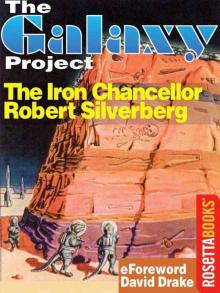 The Iron Chancellor
The Iron Chancellor Lord Prestimion
Lord Prestimion To Open the Sky
To Open the Sky The World Inside
The World Inside Chains of the Sea
Chains of the Sea The Collected Stories of Robert Silverberg, Volume Five: The Palace at Midnight
The Collected Stories of Robert Silverberg, Volume Five: The Palace at Midnight Postmark Ganymede
Postmark Ganymede The Second Trip
The Second Trip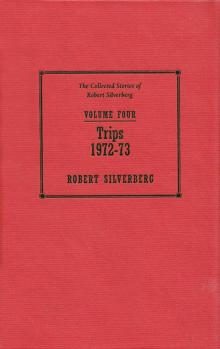 The Collected Stories of Robert Silverberg, Volume 4: Trips: 1972-73
The Collected Stories of Robert Silverberg, Volume 4: Trips: 1972-73 Son of Man
Son of Man Tom O'Bedlam
Tom O'Bedlam To the Land of the Living
To the Land of the Living To Be Continued: The Collected Stories of Robert Silverberg, Volume One
To Be Continued: The Collected Stories of Robert Silverberg, Volume One Shadrach in the Furnace
Shadrach in the Furnace The Chalice of Death: Three Novels of Mystery in Space
The Chalice of Death: Three Novels of Mystery in Space The Queen of Springtime
The Queen of Springtime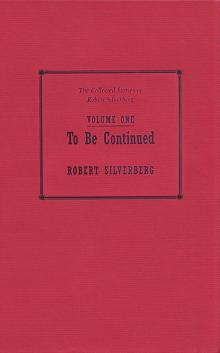 To Be Continued 1953-1958
To Be Continued 1953-1958 Legends
Legends Roma Eterna
Roma Eterna To Live Again
To Live Again At Winter's End
At Winter's End Needle in a Timestack
Needle in a Timestack To Live Again and the Second Trip: The Complete Novels
To Live Again and the Second Trip: The Complete Novels Lord of Darkness
Lord of Darkness The Mountains of Majipoor
The Mountains of Majipoor The World Outside
The World Outside The Alien Years
The Alien Years The Book of Skulls
The Book of Skulls The Face of the Waters
The Face of the Waters Gilgamesh the King
Gilgamesh the King The Collected Stories of Robert Silverberg, Volume 6: Multiples: 1983-87
The Collected Stories of Robert Silverberg, Volume 6: Multiples: 1983-87 The Happy Unfortunate
The Happy Unfortunate Three Survived
Three Survived Cronos
Cronos Tower of Glass
Tower of Glass Legends II
Legends II The Planet Killers
The Planet Killers The Collected Stories of Robert Silverberg, Volume 2: To the Dark Star: 1962-69
The Collected Stories of Robert Silverberg, Volume 2: To the Dark Star: 1962-69 Downward to the Earth
Downward to the Earth Lord Valentine's Castle: Book One of the Majipoor Cycle
Lord Valentine's Castle: Book One of the Majipoor Cycle Hot Times in Magma City, 1990-95
Hot Times in Magma City, 1990-95 Hunt the Space-Witch! Seven Adventures in Time and Space
Hunt the Space-Witch! Seven Adventures in Time and Space Majipoor Chronicles
Majipoor Chronicles The Robert Silverberg Science Fiction Megapack(r)
The Robert Silverberg Science Fiction Megapack(r) Starman's Quest
Starman's Quest Car Sinister
Car Sinister Worlds of Maybe
Worlds of Maybe Fantasy The Best of 2001
Fantasy The Best of 2001 Revolt on Alpha C
Revolt on Alpha C Homefaring
Homefaring The Pardoner's Tale
The Pardoner's Tale Sailing to Byzantium - Six Novellas
Sailing to Byzantium - Six Novellas The Chalice of Death
The Chalice of Death Sundance
Sundance A Tip on a Turtle
A Tip on a Turtle Nebula Awards Showcase 2001: The Year's Best SF and Fantasy Chosen by the Science Fiction and Fantasy Writers of America
Nebula Awards Showcase 2001: The Year's Best SF and Fantasy Chosen by the Science Fiction and Fantasy Writers of America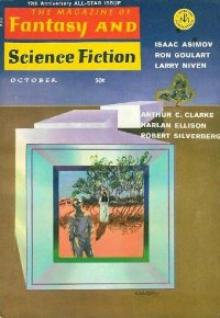 The Fangs of the Trees
The Fangs of the Trees The Palace at Midnight: The Collected Work of Robert Silverberg, Volume Five
The Palace at Midnight: The Collected Work of Robert Silverberg, Volume Five The Millennium Express - 1995-2009 - The Collected Stories of Robert Silverberg Volume Nine
The Millennium Express - 1995-2009 - The Collected Stories of Robert Silverberg Volume Nine Book of Skulls
Book of Skulls Passengers
Passengers Something Wild is Loose - 1969–72 - The Collected Stories of Robert Silverberg Volume Three
Something Wild is Loose - 1969–72 - The Collected Stories of Robert Silverberg Volume Three Multiples
Multiples Starborne
Starborne The Masks of Time
The Masks of Time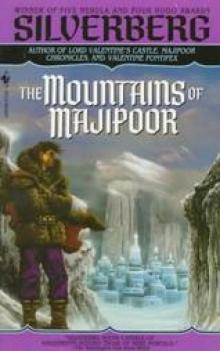 The Mountains of Majipoor m-8
The Mountains of Majipoor m-8 Multiples (1983-87)
Multiples (1983-87) Those Who Watch
Those Who Watch In the Beginning
In the Beginning Earth Is The Strangest Planet
Earth Is The Strangest Planet Collision Course
Collision Course Neutral Planet
Neutral Planet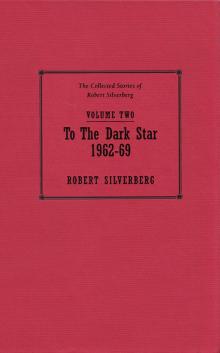 To the Dark Star - 1962–69 - The Collected Stories of Robert Silverberg Volume Two
To the Dark Star - 1962–69 - The Collected Stories of Robert Silverberg Volume Two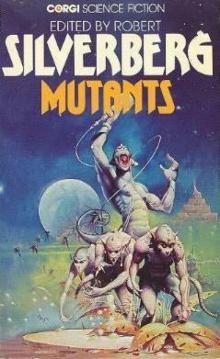 Mutants
Mutants Sailing to Byzantium
Sailing to Byzantium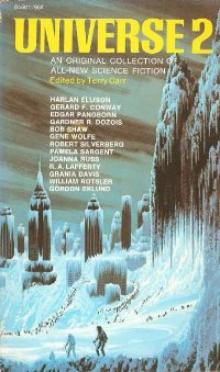 When We Went to See the End of the World
When We Went to See the End of the World Robert Silverberg The Science Fiction Hall Of Fame Volume One, 1929-1964
Robert Silverberg The Science Fiction Hall Of Fame Volume One, 1929-1964 To Be Continued - 1953–58 - The Collected Stories of Robert Silverberg Volume One
To Be Continued - 1953–58 - The Collected Stories of Robert Silverberg Volume One Valentine Pontifex m-3
Valentine Pontifex m-3 Gianni
Gianni Majipoor Chronicles m-2
Majipoor Chronicles m-2 We Are for the Dark (1987-90)
We Are for the Dark (1987-90) Waiting for the Earthquake
Waiting for the Earthquake Fantasy: The Best of 2001
Fantasy: The Best of 2001 How It Was When the Past Went Away
How It Was When the Past Went Away Beauty in the Night
Beauty in the Night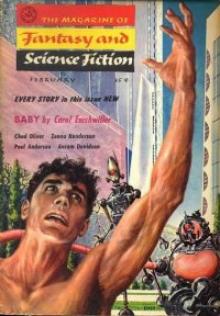 The Man Who Never Forgot
The Man Who Never Forgot The Book of Changes m-9
The Book of Changes m-9 Lord Valentine's Castle m-1
Lord Valentine's Castle m-1 This Way to the End Times
This Way to the End Times Queen of Springtime
Queen of Springtime Legends-Volume 3 Stories by the Masters of Modern Fantasy
Legends-Volume 3 Stories by the Masters of Modern Fantasy The Palace at Midnight - 1980–82 - The Collected Stories of Robert Silverberg Volume Five
The Palace at Midnight - 1980–82 - The Collected Stories of Robert Silverberg Volume Five Something Wild is Loose: The Collected Stories of Robert Silverberg, Volume Three
Something Wild is Loose: The Collected Stories of Robert Silverberg, Volume Three Multiples - 1983–87 - The Collected Stories of Robert Silverberg Volume Six
Multiples - 1983–87 - The Collected Stories of Robert Silverberg Volume Six Alaree
Alaree Three Survived: A Science Fiction Novel
Three Survived: A Science Fiction Novel Defenders of the Frontier
Defenders of the Frontier The New Springtime
The New Springtime We Are for the Dark - 1987–90 - The Collected Stories of Robert Silverberg Volume Seven
We Are for the Dark - 1987–90 - The Collected Stories of Robert Silverberg Volume Seven The Science Fiction Hall of Fame, Volume One 1929-1964--The Greatest Science Fiction Stories of All Time Chosen by the Members of the Science Fiction Writers of America
The Science Fiction Hall of Fame, Volume One 1929-1964--The Greatest Science Fiction Stories of All Time Chosen by the Members of the Science Fiction Writers of America Master Of Life And Death
Master Of Life And Death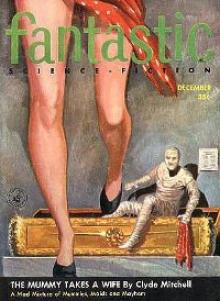 Choke Chain
Choke Chain Sorcerers of Majipoor m-4
Sorcerers of Majipoor m-4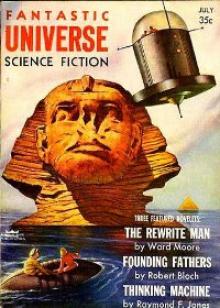 Absolutely Inflexible
Absolutely Inflexible Trips - 1962–73 - The Collected Stories of Robert Silverberg Volume Four
Trips - 1962–73 - The Collected Stories of Robert Silverberg Volume Four Hot Times in Magma City - 1990-95 - The Collected Stories of Robert Silverberg Volume Eight
Hot Times in Magma City - 1990-95 - The Collected Stories of Robert Silverberg Volume Eight Far Horizons
Far Horizons The Queen of Springtime ns-2
The Queen of Springtime ns-2 The Seventh Science Fiction Megapack
The Seventh Science Fiction Megapack Invaders From Earth
Invaders From Earth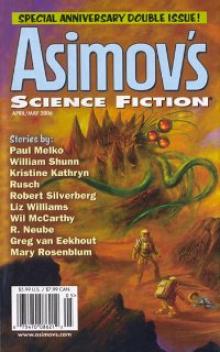 Hanosz Prime Goes To Old Earth
Hanosz Prime Goes To Old Earth The Macauley Circuit
The Macauley Circuit Science Fiction: The Best of 2001
Science Fiction: The Best of 2001 To the Dark Star: The Collected Stories of Robert Silverberg, Volume Two
To the Dark Star: The Collected Stories of Robert Silverberg, Volume Two Stochastic Man
Stochastic Man Legends: Stories By The Masters of Modern Fantasy
Legends: Stories By The Masters of Modern Fantasy To Live Again And The Second Trip
To Live Again And The Second Trip Flies
Flies The Silent Invaders
The Silent Invaders Ship-Sister, Star-Sister
Ship-Sister, Star-Sister